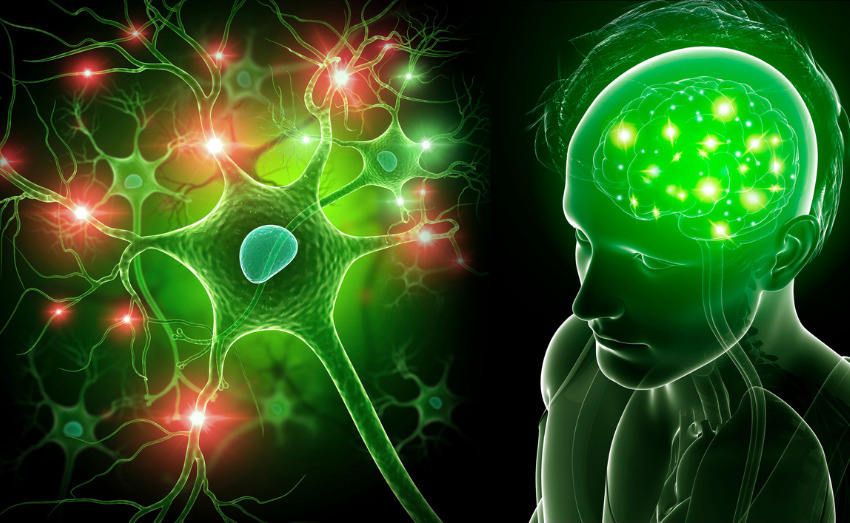Neuroprotection is the process of safeguarding the structure and function of neurons. This approach is extensively studied as a potential treatment for various central nervous system disorders (CNS)1. These include neurodegenerative diseases, stroke, traumatic brain injury, spinal cord injury, and immediate treatment of neurotoxin ingestion.
The Mechanism Behind Neuroprotection
Neuroprotection in CNS disorders, despite varying symptoms, often stems from similar mechanisms. These include reduced oxygen and glucose supply to the brain, energy failure, increased oxidative stress, mitochondrial dysfunction, excitotoxicity, inflammation, iron buildup, and protein aggregation.
Neuroprotective treatments primarily focus on oxidative stress and excitotoxicity, both closely linked to CNS disorders. These two factors can independently cause neuronal death, but their combined effect can lead to even more damage.
Excitotoxicity And Its Role In Neurodegeneration
Glutamate excitotoxicity is a key process that instigates cell death in CNS disorders. This occurs when there’s an overstimulation of glutamate receptors, especially NMDA receptors, leading to an increased influx of calcium ions (Ca 2+). This increase is due to the non-specific ion channel that opens when glutamate binds. As the Ca 2+ builds up in the neuron, it surpasses the buffering capacity of mitochondrial Ca 2+ sequestration, causing significant effects on the neuron. Since Ca 2+ acts as a secondary messenger and controls many downstream processes, its accumulation disrupts these processes, ultimately resulting in cell death.
Antioxidants’ Role In Neuroprotection
Antioxidants are vital for neuroprotection as they fight oxidative stress, a key contributor to neuronal damage. Here’s how they function:
- Fighting Oxidative Stress: The brain is susceptible to oxidative damage due to its high energy needs and limited antioxidant capacity. Antioxidants in the brain regulate the excess and abnormal levels of reactive oxygen species (ROS) and metal overload through cellular defense mechanisms and intracellular signaling.
- Addressing Excitotoxicity: Antioxidants often aim at excitotoxicity, a process closely linked with CNS disorders. Overstimulation of glutamate receptors leads to an increase in calcium ion (Ca 2+) influx. As Ca 2+ accumulates in the neuron, it disrupts the regulation of downstream processes, eventually causing cell death. Antioxidants help manage this excitotoxicity.
- Acting as Therapeutic Agents: Numerous phytochemical complexes with antioxidant properties have been identified as potential therapeutic agents for preventing or treating neurodegeneration. These antioxidants can be evaluated in vivo and in vitro through assays to determine their physical and biological properties.
- Employing Enzymatic and Non-Enzymatic Mechanisms: Neuronal cells have several factors that reduce oxidative damage and a complex antioxidant system comprising various antioxidant enzymes and non-enzymes.

NeuroprotectionTreatments
Typical neuroprotection treatments include glutamate antagonists and antioxidants, which are designed to reduce excitotoxicity and oxidative stress, respectively. Glutamate antagonists are often used as the main treatment to manage excitotoxicity in CNS disorders. These antagonists work by preventing glutamate from binding to NMDA receptors, thereby avoiding the buildup of Ca 2+ and subsequent excitotoxicity.
Examples Of Neuroprotection Treatments
There are various neuroprotection treatments available, each addressing different aspects of neurodegeneration:
- Antioxidant Therapy: This method seeks to mitigate oxidative stress, a significant contributor to neurodegeneration.2
- Gene Therapy: This technique uses genes to treat or prevent diseases.
- AC-11: Present in several nootropic formulations, AC-11 may assist with enzymatic repairs and offer protection against DNA damage.3
- Acetyl-L-carnitine: This naturally occurring compound has demonstrated neuroprotective effects in animal models post-stroke.
- Acetylcholinesterase inhibitors: These medications block the neurotransmitter acetylcholinesterase, enhancing brain function and reducing neurodegeneration linked to Alzheimer’s disease.
- Acetylcysteine: This supplement and pharmaceutical medication is primarily used to reduce mucus accumulation but is occasionally used for acetaminophen overdose.
- Lithium: Different compounds of lithium are used to manage psychiatric conditions like bipolar disorder.
Other Neuroprotection Treatments
In addition to glutamate antagonists and antioxidants, several other neuroprotection strategies are being investigated:
- Caspase Inhibitors: These are mainly used for their ability to prevent apoptosis.
- Trophic Factors: The potential of trophic factors in providing neuroprotection in CNS disorders, particularly in ALS, is being studied.
- Therapeutic Hypothermia: This method is being examined as a potential neuroprotective treatment for patients with traumatic brain injury, with the aim of reducing intracranial pressure.
- GDNF Infusion into the Brain: The infusion of GDNF (Glial cell line-derived neurotrophic factor) into the brain is being trialed as a possible neuroprotective treatment.
- GDNF Gene Therapy Procedures: Procedures involving GDNF gene therapy are also under investigation, similar to GDNF infusion.4
- Inhibition of Inflammation in the Brain: This approach seeks to decrease inflammation in the brain, which can lead to neuronal damage.
- Improvement of Mitochondrial Function: Enhancing the function of mitochondria, essential for cellular energy production, is another strategy under examination.
- Manipulation of Lipid Metabolism: This strategy involves modifying lipid metabolism to achieve neuroprotection.
Safety Of Neuroprotection Treatments
Ensuring the safety of neuroprotective treatments is vital. These points are key:
- Clinical Trials: Neuroprotective treatments undergo thorough testing in clinical trials before approval. The SONIC trial, for instance, evaluated Neu2000 and thrombectomy in stroke patients.
- Side Effects: All treatments can have side effects. For example, lanabecestat was tolerated well but didn’t slow cognitive or functional decline.5
- Individual Differences: The safety and effectiveness of treatments can differ among individuals due to factors like age, health status, and other medical conditions.
- Combination Treatments: Some neuroprotective treatments are combined with other therapies. The safety of these combinations is also tested in clinical trials.
- Ongoing Research: Studies on the safety and effectiveness of neuroprotective treatments continue. As we learn more about neurological diseases, we can develop safer and more effective treatments.

Side Effects Of Neuroprotection Treatments
Like all medical treatments, neuroprotection therapies can have side effects, which can differ based on the specific treatment:
- Topical Carbonic Anhydrase Inhibitors (CAIs): Generally safe for systemic use, these can cause ocular side effects such as stinging, burning, a sensation of a foreign body in the eye, and temporary vision blurring.
- Nortriptyline: In one study, this medication had the highest rate of side effects, with 56% of participants experiencing them.
- Mexiletine: This medication had the lowest rate of side effects in the same study, with only 39% of participants experiencing them.
- Tier 3 Treatments: These treatments, including decompressive craniectomy, high-dose barbiturates, and mild hypothermia, have the highest risk of complications.
Benefits Of Neuroprotection
Neuroprotection provides several advantages, especially for those suffering from certain neurological disorders. Here are the main benefits:
- Guarding Against Injury and Damage: Neuroprotection’s primary goal is to shield the nervous system from harm and damage, a critical aspect for individuals with neurological diseases.
- Preventing Additional Nerve Damage: Current neuroprotective measures may not reverse existing damage, but they can help prevent further nerve damage and slow down the degeneration of the central nervous system (CNS).
- Treating Various Conditions: Some neuroprotective strategies can benefit more than one condition, as many neurological disorders share common characteristics.
- Potential for Developing New Treatments: Researchers continually explore a broad spectrum of treatments, some already used today. This ongoing research offers hope for creating new neuroprotective therapies in the future.
- Enhancing Quality of Life: By slowing down the progression of neurological diseases and preventing further nerve damage, neuroprotection can improve the quality of life for individuals with these conditions.

Final Words
Neuroprotection is a promising area in treating various neurological disorders. By comprehending and addressing the mechanisms that cause neuronal injury, such as excitotoxicity and oxidative stress, we may be able to decelerate or even stop the progression of these severe diseases. However, it’s essential to consider the potential risks and side effects linked with neuroprotective treatments. While current neuroprotectors can’t undo existing damage, they might safeguard against additional nerve damage and decelerate any degeneration of the central nervous system (CNS). As research in this area progresses, we can anticipate more effective and safer neuroprotective strategies in the future.
FAQs
Sources
- Wikipedia Contributors. “Neuroprotection.” Wikipedia, Wikimedia Foundation, 14 Feb. 2019, en.wikipedia.org/wiki/Neuroprotection. Accessed 27 Oct. 2023. ↩︎
- “Neuroprotection: A Solution for Neurological Disease?” Www.medicalnewstoday.com, 11 June 2019, www.medicalnewstoday.com/articles/53700. Accessed 27 Oct. 2023. ↩︎
- “Neuroprotective Agents: List of Drugs & Supplements – Mental Health Daily.” Mental Health Daily, 30 June 2015, mentalhealthdaily.com/2015/02/17/neuroprotective-agents-list-of-drugs-supplements/. Accessed 27 Oct. 2023. ↩︎
- Ph.D, Rebecca Gilbert, MD. “Strategies for Future Parkinson’s Disease Treatments | APDA.” American Parkinson Disease Association, 21 Sept. 2021, www.apdaparkinson.org/article/strategies-for-future-parkinsons-disease-treatments/. Accessed 27 Oct. 2023. ↩︎
- Levin, Leonard A, et al. “Neuroprotection in Neurodegenerations of the Brain and Eye: Lessons from the Past and Directions for the Future.” Frontiers in Neurology, vol. 13, 12 Aug. 2022, https://doi.org/10.3389/fneur.2022.964197. Accessed 27 Oct. 2023. ↩︎




































